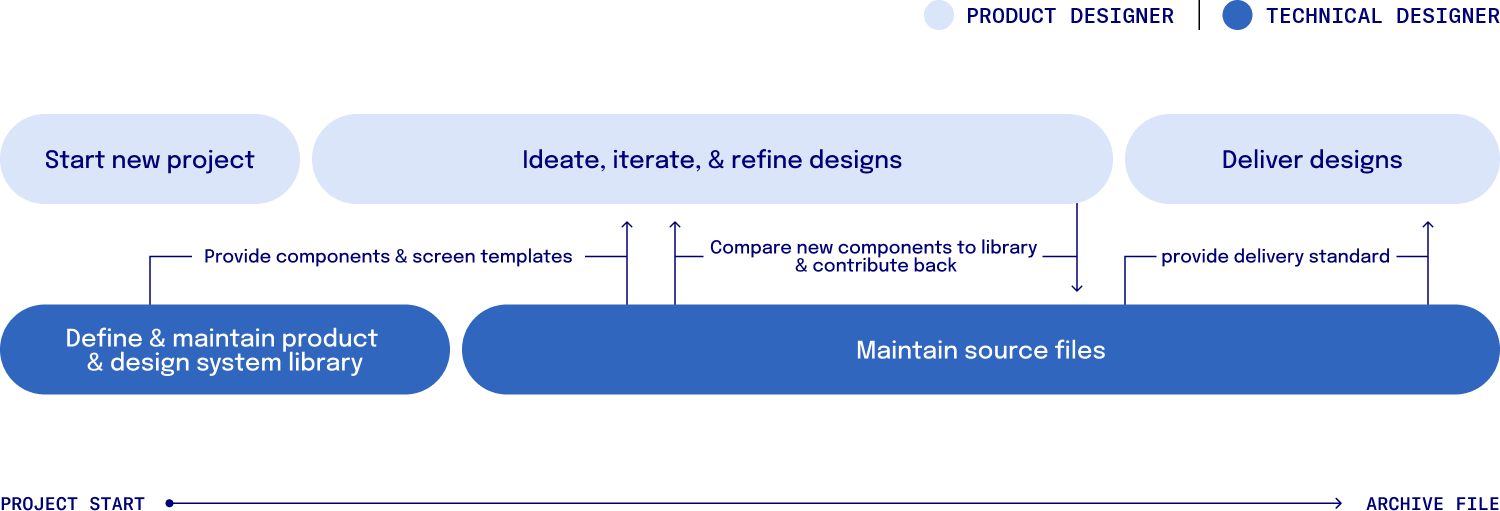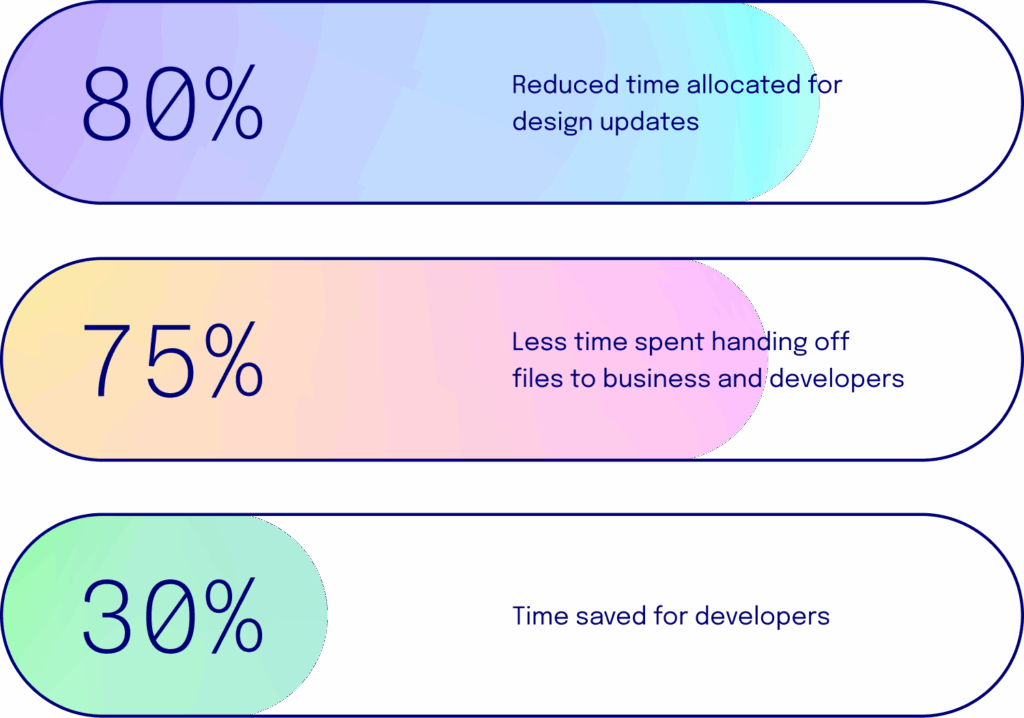Product and Technical Designer: The Dynamic Duo Fighting Against Design Debt
Product teams are moving faster than ever, with high-performing teams prioritizing speed over structure to quickly respond to evolving business and consumer needs. This agility results in rapid delivery, but speed comes at a cost. Compromises in design, usability shortcuts, and product inconsistencies are often introduced when prioritizing urgency over polish. We identify this cost as ‘design debt,’ and, like all debts, it will eventually need to be paid.
What is Design Debt?
Design debt is a natural byproduct of growth and innovation. It represents the accrued volume of unresolved issues, both visible and hidden, which are slowly eroding product quality and team efficiency. Design debt can occur at both the individual and organizational level. When left unmanaged, it becomes a major blocker, draining team momentum and causing frustration across the entire product pipeline.
Symptoms of design debt can include:
- Minor product changes require massive team lifts.
- Designers spending more time fixing files than innovating, with effort shifting from creation to maintenance.
- Important UX improvements continuously buried in backlog graveyards, rarely revisited.
The Hidden Cost of Design Debt
All design debt has a cost — whether it’s extremely visible and delaying key product features, or buried deep in files quietly affecting team productivity. Overlooking these consequences for too long eventually causes small debts to balloon into expensive organizational shifts.
Unresolved design debt can reduce team efficiency significantly, leading to missed deadlines, inflated budgets, and costly rework. A single inconsistent component replicated across multiple products could mean tens of thousands of dollars in wasted effort. And when the debt becomes systemic, the fix often requires a full-scale overhaul. Design debt isn’t just a design problem. It’s a business risk.
Keeping Debt in Check
Managing design debt isn’t just about staying attentive to accumulation; it’s about innovating how you govern debt in the first place. At One North, we manage design debt with a partnership that aligns two key roles: a Technical Designer and a Product Designer. These two roles work in close collaboration, levering their own unique skillsets to fill the gaps created through rapid innovation.
Here is a breakdown:

This proactive model is symbiotic. It allows Product Designers to focus on product strategy while ensuring designs are scaled and maintained through the foundational support provided by the paired Technical Designer.

When these two roles collaborate from the start, their impact resonates across the entire product pipeline, from internal team members to the customer experience.
Partnership outcomes include:
- Innovation ramps up as minor changes are addressed directly through a design system, rather than a series of expensive manual adjustments.
- Designers and developers speak the same language, with increased parity between design files and developer output, reducing technical debt and code complexity through consistent and documented UX patterns.
- Teams are more aligned and invigorated to solve complicated UX challenges when removed from the burden of tedious redundant tasks, reducing the costs associated with team burnout and frustration.
- Reduced ambiguity around product and team workflow expectations allows new team members to onboard quickly.
- A more thoughtful, unified, and consistent product experience is achieved.
A Measurable Impact
Impact isn’t just a feeling; it’s something we can measure. When One North onboards their Technical Designers onto product teams, our clients see real and measurable results.
Case study example:
One North onboarded a technical designer onto a product team that was stretched thin supporting a consumer kiosk experience. Product designers needed to focus on solving product challenges amidst evolving business needs. However, they were held back in the churn of inconsistent files and a large software migration. The technical designer onboarded and produced an immediate audit, identifying key migration needs and workflow redundancies.
The result was a system uniquely built for the kiosk team. It addressed time-stealing workflow concerns, such as resolution scaling automations, allowed for greater parity between designers and developers with a shared library and semantic language, and migrated thousands of components to Figma with little disruption to the product team’s efforts.
The results were measurable:

Worth the Investment
Design debt, whether it is ignored, delayed, or governed proactively, always needs to be paid. Adding a Technical Designer to a product pipeline may require additional upfront cost, but the return is immediate and long-lasting. It is the difference between addressing debt upon purchase, versus letting it accrue interest over time, and forcing teams to make complicated, slow, and expensive organizational shifts to meet future business and product needs.
If you’re ready to reduce design debt and unlock better outcomes for your team and product, we’d love to connect.
Photo Credit: Eugene Golovesov
Ashley Briggs
Ashley Briggs is Manager, Product Design at One North. She has experience working in both in-house and agency settings, where her current role at One North has allowed her to understand her clients more and help them navigate new design suggestions. Ashley helps her clients to create accessible products that are driven by business goals and achieve what their users’ needs.
Roxanne Sirois
Roxanne Sirois is a Design Lead at One North with a focus on Design Systems. She partners with clients to bring clarity and structure to complex system challenges and helps teams cultivate enthusiasm for design systems as a foundation for innovation. Roxanne helps her clients feel the impact of design systems through data driven results that measure against strong system foundations, team workflow optimizations, and positive user experiences.
